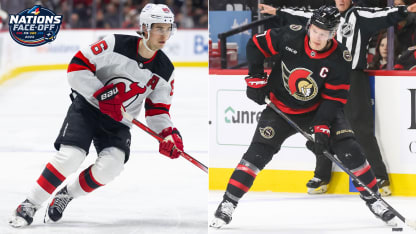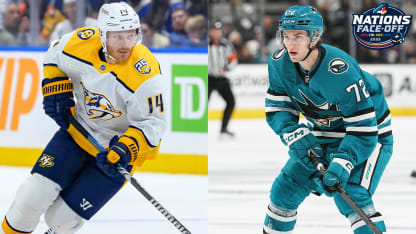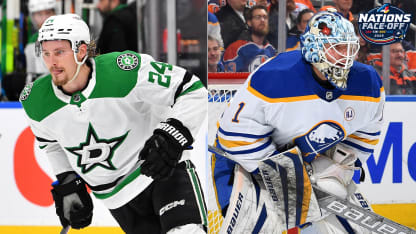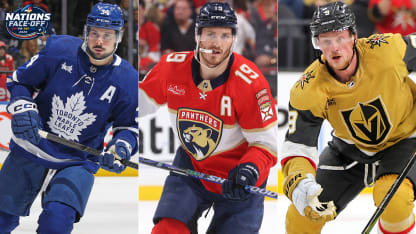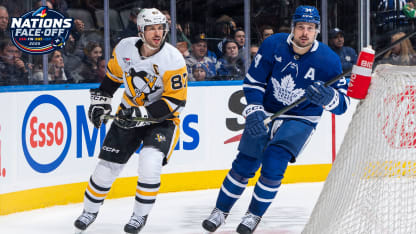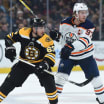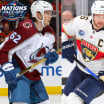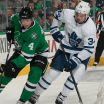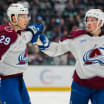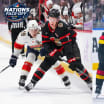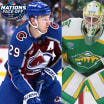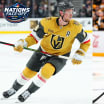The 2025 4 Nations Face-Off will be held from Feb. 12-20 in Montreal and Boston, with teams of NHL players from Finland, Sweden, Canada and the United States competing in a round-robin tournament. This will be the first best-on-best tournament since the World Cup of Hockey 2016 in Toronto.
Though the international tournament is more than seven months away, NHL.com wanted to take an updated look at what the rosters for each country could look like, using a panel of three staff writers and editors to compile a list of 23 players (20 skaters, three goalies) for each team.
NHL staff writers Amalie Benjamin, Mike G. Morreale and Dan Rosen unveiled their original United States roster in February and take another shot at it now with the season over, with some changes. Also, six players (marked by an asterisk) were named to the roster last month.
Here is the United States projected roster (listed alphabetically by position):
Forwards (13)
Cole Caufield, Montreal Canadiens
Kyle Connor, Winnipeg Jets
Jack Eichel, Vegas Golden Knights*
Jake Guentzel, Tampa Bay Lightning
Jack Hughes, New Jersey Devils
Clayton Keller, Utah Hockey Club
Dylan Larkin, Detroit Red Wings
Auston Matthews, Toronto Maple Leafs*
J.T. Miller, Vancouver Canucks
Jason Robertson, Dallas Stars
Brady Tkachuk, Ottawa Senators
Matthew Tkachuk, Florida Panthers*
Vincent Trocheck, New York Rangers
The last time we did this, I broke down the goal-scorers, playmakers, the power and skill, the points and everything else the United States' forward group will have in the 4 Nations Face-Off. Nothing has changed on that front. What's changed from our first projection is that Trocheck, Caufield and Guentzel have replaced Tage Thompson of the Buffalo Sabres, Brock Boeser of the Canucks and Alex DeBrincat of the Red Wings. Now let's see how they can line up, because when you see it, you'll realize how good this group can be. Top line? Well, they're all top lines, but in this tournament, you have to find players who are going to sacrifice for the good of the team. So, our first line is Auston Matthews between Matthew and Brady Tkachuk. Size. Power. Speed. Skill. Nobody will want to go up against that line. My second line has a combination of skill and elite hockey sense and goal-scoring; Jack Eichel between left wing Jason Robertson and right wing Jack Hughes. Hughes playing on his off wing could make for some highly entertaining creativity. Here's where we get to sacrificing for the betterment of the team. Vincent Trocheck as the third line center with Cole Caufield on the right and Jake Guentzel on the left. Trocheck wins face-offs, plays with speed and is defensively reliable. Caufield is a pure goal-scorer. Guentzel has a nose for the net and plays well behind the goal line and in the home plate area. They will own zone time. The fourth line can be either J.T. Miller or Dylan Larkin in the middle, Kyle Connor on the right side and Clayton Keller on the left. It's as good as any first line, but those four players can play a grinding style. They can be hard on the walls. They can forecheck. These are merely suggestions for coach Mike Sullivan. There will be a method and process for him to follow to put the lines together to get the most balance. But at first glance, these could work, and they are elite. -- Rosen
Defensemen (7)
Brock Faber, Minnesota Wild
Adam Fox, New York Rangers*
Quinn Hughes, Vancouver Canucks*
Charlie McAvoy, Boston Bruins*
K'Andre Miller, New York Rangers
Jaccob Slavin, Carolina Hurricanes
Zach Werenski, Columbus Blue Jackets
There's no shortage of versatility, power, and intimidation among the seven defensemen chosen to make up our U.S. roster. Each player thrives at doing the little things for the benefit of team success, like blocking shots, and understanding that clearing the zone when the pressure mounts might not be the flashiest play, but the smartest play. The surprise of the group might be 21-year-old Minnesota Wild rookie Brock Faber, who was second in the voting (behind Connor Bedard) for the Calder Trophy this past season as the NHL rookie of the year. The big right-hander (6-foot-1, 200 pounds) exhibits exceptional poise and determination that was too good to pass up and will provide quality ice time. Additionally, we were able to select players who will fill in at their natural positions at the point; there are four left-handed shots (Harley, Hughes, Slavin, Werenski) and three right-handed shooters (Faber, Fox, McAvoy). Each of these exceptionally talented blue liners can make timely plays and log heavy minutes. Hughes, Fox and Werenski, who combined for 45 goals and 222 points in the regular season, are the drivers from the defensive end, while McAvoy, Slavin and Faber will each provide the necessary and responsible two-way game. Miller is the only new addition to our list, replacing Rangers teammate Jacob Trouba from our original list. He had Thomas Harley of the Dallas Stars here, but he will play for Canada if he makes their roster. Fox and McAvoy have a history of international success dating to their gold-medal winning performance for the U.S. at the 2017 IIHF World Junior Championship. -- Morreale
Goalies (3)
Thatcher Demko, Vancouver Canucks
Jeremy Swayman, Boston Bruins
Connor Hellebuyck, Winnipeg Jets
When we last did our roster projections, I was bullish on the options that the United States has in goal. Now? I'm even more so. The U.S. has four fantastic options in net, any of which would put the team in contention to win, with Hellebuyck, Swayman, Demko and Jake Oettinger of the Dallas Stars, who was the last cut in our original projection and remains there. But it's Swayman who did the most to solidify his position in the past few months, with an outstanding Stanley Cup Playoffs in which he was the biggest factor in his Bruins making it to Game 6 of the Eastern Conference Second Round against the eventual Stanley Cup champion Florida Panthers, with a 2.15 goals-against average and .933 save percentage in 12 games. And he's the backup. Ahead of Swayman is Hellebuyck, who won the Vezina Trophy for the second time this past season after going 37-19-4 with a 2.39 GAA and .921 save percentage. Add in Demko and Oettinger, both of whom were among the best in the NHL this season, and the United States can't go wrong with its picks. That's an excellent starting point heading into the tournament, giving them a leg up on some of the other teams. I'll be interested to see how the U.S. manages its stable of goalies. But there's no question that they have the best and deepest group in the tournament. -- Benjamin
